Magnetism | Chapter 7 | 8th Science - Student Activities | 8th Science : Chapter 7 : Magnetism
Chapter: 8th Science : Chapter 7 : Magnetism
Student Activities
Activity 1
Take some iron filings in a paper and place a magnet near them. Do you see the iron filings being attracted by the magnet? In which part of the magnet they are attracted?
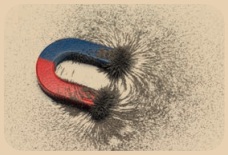
Answer: The iron filings are attracted near the ends of the magnet. These ends are called poles of a magnet.
Conclusion : This shows that the attractive property of a magnet is more at the poles.
Activity 2
Take a bar magnet and suspend it from a support. Hold another bar magnet in your hand. Bring the north pole of this magnet close to the north pole of the suspended magnet. What do you see? The north pole of the suspended magnet will move away.
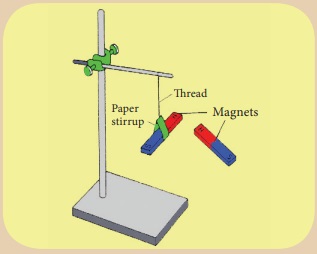
Answer: Inference : This activity explains repulsive property of a magnet that like poles repel each other i.e., a north pole repels another north pole and a south pole repels another south pole. If you bring the south pole of the magnet close to the north pole of the suspended magnet you can see that the south pole of the suspended magnet is immediately attracted
Conclusion : Thus, we can conclude that unlike poles of a magnet attract each other, i.e., the north pole and the south pole of a magnet attract each other.
Activity 3
Suspend a bar magnet from a rigid support using a thread. Ensure that there are no magnetic substances placed near it. Gently disturb the suspended magnet. Wait for a moment, let it oscillate. In a short time it will come to rest. You can see that the north pole of the magnet is directed towards the geographic north. Repeat the procedure a number of times. You will observe that the magnet is oriented in the same direction.

Answer: The magnet is oriented in the same direction.
This experiment shows that a freely suspended bar magnet always aligns itself in the geographic north-south direction.
Conclusion : The property of a magnet, by which it aligns itself along the geographic north-south direction, when it is freely suspended, is known as the directive property of a magnet.
Activity 4
Spread some iron filings collected from the sand uniformly on a sheet of white paper placed on a table. Place a bar magnet below the white sheet. Gently tap the table. What do you see? You can see the pattern as shown in the figure.

Answer: I can see the iron filings are arranged in the form of curved patterns around the magnet.
The space around the bar magnet where the arrangement of iron filings exists, represents the field of influence of the bar magnet. It is called the magnetic field.
Activity 5
Spread some iron pins, stapler pins, iron nails, small pieces of paper, a scale, an eraser and a plastic cloth hanger on a wooden table. Place a magnet nearby these materials. What do you observe? List out which of these things are attracted by the magnet? Which objects are not attracted? Tabulate your observations.
Answer:
Aim : To understand the behaviour of magnetic and non-magnetic materials.
Materials attracted by magnet
Iron pins
Stapler pins
Iron nails
Materials not attracted by magnet
Scale
Eraser
Small pieces of paper
Plastic cloth hanger
Activity 6
Spread some steel pins on a wooden board and bring an iron nail near them. Are they attracted? Now, make one of the magnetic poles of the bar magnet touch one end of the iron nail. Slide it along its length in one direction slowly till the other end is reached. Repeat the process 20 to 30 times as shown in the diagram. The magnet has to be moved in one direction only. Avoid the swiping of the magnet back and forth. Now, bring the iron nail near the steel pins. What do you notice? The steel pins stick to the iron nail because nail has become a temporary magnet.
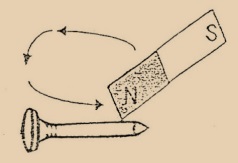
Magnetisation is a process in which a substance is made a permanent or temporary magnet by exposing it to an external magnetic field. This is one of the methods to produce artificial magnets.
Do You Know
Know Your Scientist
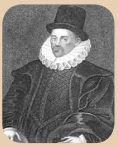
William Gilbert laid the foundation for magnetism and suggested that the Earth has a giant bar magnet. William Gilbert was born on 24th May 1544. He was the first man who performed the systematic research on the properties of the lodestone (magnetic iron ore) and published his findings in the influential ŌĆśDe MagneteŌĆÖ (The Magnet).
A compass needle, also known as plotting compass or magnetic needle, consists of a tiny pivoted magnet in the form of a pointer,which can rotate freely in the horizontal plane. The ends of the compass needle point approximately towards the geographic north and south direction.
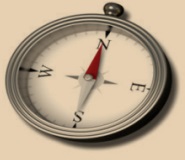
More to know
The temperature, at which the ferromagnetic material becomes paramagnetic is called the curie temperature.
Alnico cow magnet is used to attract sharp iron wire and other iron objects that may be ingested by animals while grazing thereby causing damage to their digestive tract.
The most powerful magnet in the universe is actually a neutron star called magnetar (magnetic neutron star) located in the Milky Way Galaxy. The diameter of the magnetar is 20 kilometer and its mass is 2 to 3 times that of the Sun. Its magnetic field is so enormous and lethal that it is capable of absorbing all the iron atoms from the bloodstream (hemoglobin) of a living body even if it is positioned at a distance of 1000 km from it.
Pigeons have extraordinary navigational abilities. It enables them to find their way back home even if you take them to a place where they have never been before. The presence of magnetite in their beaks enables them to sense the magnetic field of the Earth. Such a magnetic sense is called magneto-reception.
EarthŌĆÖs magnet is 20 times more powerful than a fridge magnet.
Maglev train (Magnet levitation train) has no wheels. It floats above its tracks due to strong magnetic forces applied by computer controlled electromagnets. It is the fastest train in the world. The speed attained by this train is around 500 km/hr.

The ┬Łstrip on the back of a credit card/debit card is a magnetic strip, often called a magstripe. The magstripe is made up of tiny iron-based magnetic particles in a thin plastic film. Each particle is really a very tiny bar magnet about 20 millionth of an inch long.

Related Topics